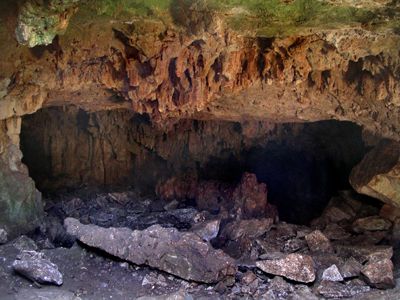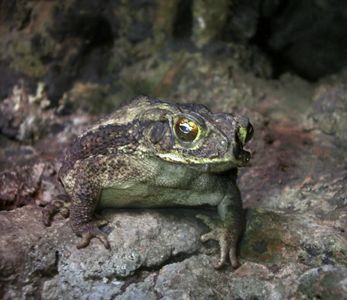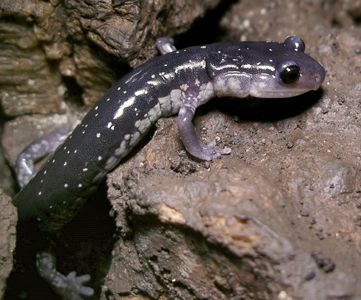August, 2017
Just a Hole in the Ground
by Valerie
Caves are cool. Literally and figuratively. But what is more disappointing than to enter an enticing gap in the ground only to find that it simply dead-ends at that point, without leading on to deeper mysteries?
The most famous cave systems in the world are, of course, the largest, deepest, longest, and those with the most amazing mineral formations. The U.S. boasts some great ones: Carlsbad, Lechuguilla and Mammoth, as well as loads of others not as celebrated. Many residents of central Texas do not even know that the numerous caves of the Balcones Escarpment are home to one of the most biologically diverse biomes of troglobites and other cave dwellers in the world, comparable to Postojna Cave in Slovenia.
Average people rarely get to explore caves on their own. They are invited into carefully sanitized examples with ease-of-access accommodations in place, including adequate lighting, safety railings and strict supervision that keeps them on the path. A small number of adventurous spelunkers are willing to risk life and limb as they squirm through tiny passages, crawl into frighteningly narrow spaces and test the limits of their expertise in the name of exploration. For most of us, though, our underground ventures rarely extend past the edge of the light at the entrance. And that's not necessarily a bad thing. It's a lot of fun to check out a small karst feature without danger or the need for professional guidance.
 There is just such a small cavern on the property of the Lady Bird Johnson Wildflower Center in Austin, Texas. In fact, there are two caves on the property, but one is slightly deeper and, of course, has the usual heavy bars and padlocked gate at the entrance that put quite a damper on an amateur explorer's sense of adventure. The other is so small and shallow that it is allowed to remain natural, with just a surrounding barrier of extremely thorny vines and shrubs and a small wooden gate.
There is just such a small cavern on the property of the Lady Bird Johnson Wildflower Center in Austin, Texas. In fact, there are two caves on the property, but one is slightly deeper and, of course, has the usual heavy bars and padlocked gate at the entrance that put quite a damper on an amateur explorer's sense of adventure. The other is so small and shallow that it is allowed to remain natural, with just a surrounding barrier of extremely thorny vines and shrubs and a small wooden gate.
I've learned a bit about the history of this particular little hole in the ground. When the Wildflower Center acquired the property, back in 1995, the opening was filled with debris; it had served the previous farm owners as a convenient garbage dump. Not only did the blockage ruin a perfectly good habitat, but it also kept water from seeping down to the Edwards Aquifer. A team of volunteers removed the rubble, no small task. It was hard and dirty work, but they cleared out an attractive little space, and the cleaning continues off and on as mud and rocks are cleared at the far edges.
For our ongoing documentation of the fauna in the gardens, I've taken a look into the cave several times. There is a large boulder so it is possible to step down into the shallow depression and then, if one bends down, take a few awkward scooting steps under the overhanging ceiling. As with everywhere else on the Wildflower Center property, I am always on the lookout for rattlesnakes, especially in areas that might be favorite hangouts. So far, I've not heard of any found in this cave, but I still look around carefully every time just in case.
The first animals I encountered were camel crickets. LOTS of them. I learned that I should always keep a hat on while in there or risk having them in my hair. During the hottest and driest times, nothing much is usually evident in such a bare and rocky location. I suspect that most animals retreat into deeper cracks where there is more moisture. When it is cooler and wetter, though, the cave is more welcoming to amphibians. I saw one of the largest toads I can remember calmly watching me from its perch near the wall during one visit. From its well-fed look, I suppose it had been feasting on camel crickets.
One animal that I had been hoping to see ever since I moved to this area over 30 years ago is a salamander. Of course I'll never see the famous blind cave salamanders in the wild, but I have known for a long time of the slimy salamanders that can sometimes be found under rocks or logs or, most notably, in shallow caves. I half-heartedly scanned the recesses in the little cave with my flashlight numerous times, wishing that I'd see a salamander but not particularly expecting to. Then someone told me that he HAD seen salamanders in that location. He said there were several, and they were climbing on the walls. This information came to me in early spring, so the weather was right for such a sighting and I lost no time in checking it out myself with renewed enthusiasm. My first try yielded a glimpse of a slimy tail as it quickly retreated into a little crevasse. Yes! I was sure that if I were more stealthy, I could see one without scaring it away.
The next week, the weather had still been very wet and cool. In spite of the muddy nature of the cave, not to mention the discomfort of having to bend down so much, I made another excursion into the darkness. I was keen to get photos of one of those elusive salamanders. This time I hit the jackpot and saw several of the fascinating amphibians. Not only did I see them, but a couple just sat and looked at me, allowing me to take pictures and view them up close. They were bigger than I expected, but looked just like pictures I'd seen. Out of curiosity about their "slimy" nature, I picked one up. It energetically wiggled right out of my hand! The slime was not just slippery, it was sticky too, sort of like slug mucus. I scraped off the mess, but also washed it off as soon as possible. The coating was remarkably persistent. I probably should have read up on these animals before experimenting with touching them, as I belatedly found out that the dried secretions are nearly impossible to remove from one's hands. Well, now I know.
Most recently, when I looked into the cave, expecting to perform the usual unproductive search for snakes before climbing down, I was startled to see one basking right on the large, flat, centrally located boulder that served as a step. It wasn't a rattlesnake but a checkered garter snake, and a beautifully marked one at that. I thought that at any moment it would dash off its perch and hide, so I carefully bent closer and closer as I took photos. The snake didn't move a whit. Then I noticed, on a lower rock, a small ground skink. What a reptile haven! As I was moving around the cave rim to get a different angle for pictures, the skink carefully slithered away under some fallen leaves. But the garter snake just watched me.  It had probably seen loads of people come and go and had learned that they weren't nearly as dangerous as birds or raccoons. I didn't have the heart to ask it to move so I could step down to check out the rest of the space, hence it had one more affirmation of its security inside that little refuge.
It had probably seen loads of people come and go and had learned that they weren't nearly as dangerous as birds or raccoons. I didn't have the heart to ask it to move so I could step down to check out the rest of the space, hence it had one more affirmation of its security inside that little refuge.
With all the small caves and other karst features in our area that are off limits due to their location or dangerous nature, it's nice to know there is one that I can easily look into and even explore. The dirt floor, craggy walls and rough ceiling are not particularly picturesque, but the chance of meeting the inhabitants of this little retreat lends an air of anticipation to my brief forays at the edge of the subterranean world.
 There is just such a small cavern on the property of the Lady Bird Johnson Wildflower Center in Austin, Texas. In fact, there are two caves on the property, but one is slightly deeper and, of course, has the usual heavy bars and padlocked gate at the entrance that put quite a damper on an amateur explorer's sense of adventure. The other is so small and shallow that it is allowed to remain natural, with just a surrounding barrier of extremely thorny vines and shrubs and a small wooden gate.
There is just such a small cavern on the property of the Lady Bird Johnson Wildflower Center in Austin, Texas. In fact, there are two caves on the property, but one is slightly deeper and, of course, has the usual heavy bars and padlocked gate at the entrance that put quite a damper on an amateur explorer's sense of adventure. The other is so small and shallow that it is allowed to remain natural, with just a surrounding barrier of extremely thorny vines and shrubs and a small wooden gate.


 It had probably seen loads of people come and go and had learned that they weren't nearly as dangerous as birds or raccoons. I didn't have the heart to ask it to move so I could step down to check out the rest of the space, hence it had one more affirmation of its security inside that little refuge.
It had probably seen loads of people come and go and had learned that they weren't nearly as dangerous as birds or raccoons. I didn't have the heart to ask it to move so I could step down to check out the rest of the space, hence it had one more affirmation of its security inside that little refuge.